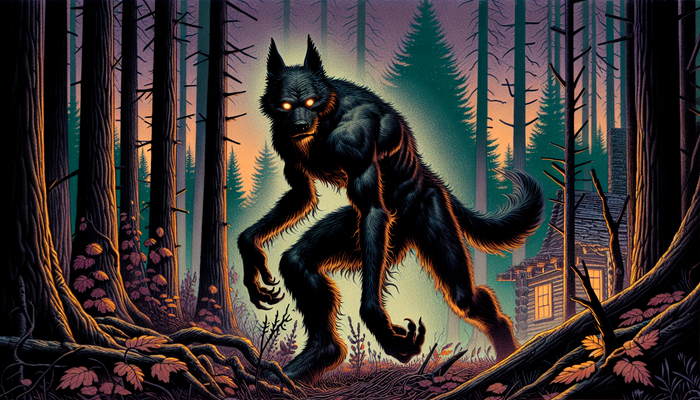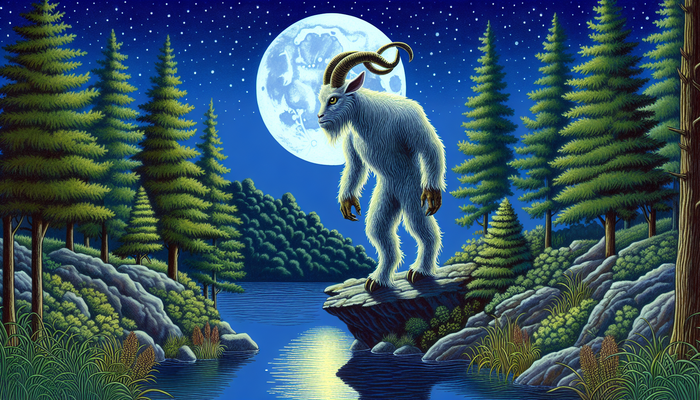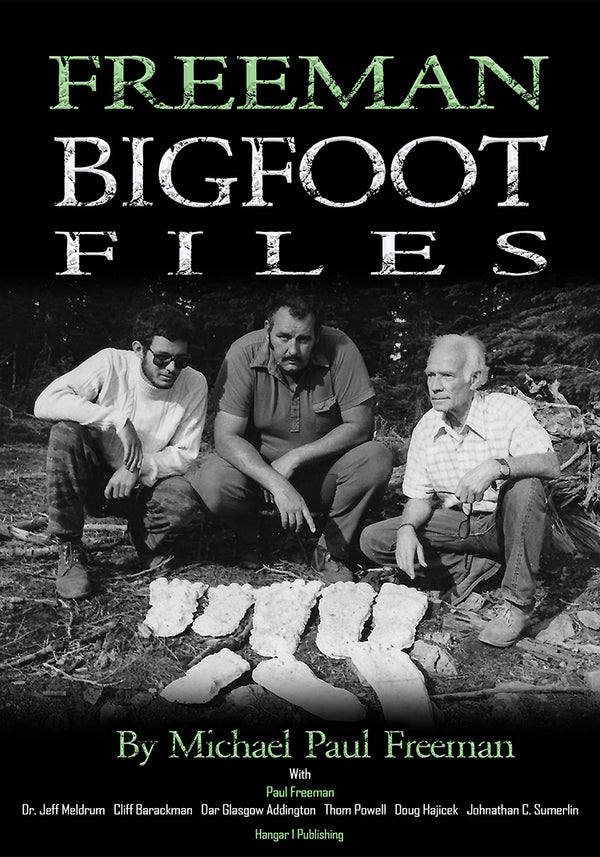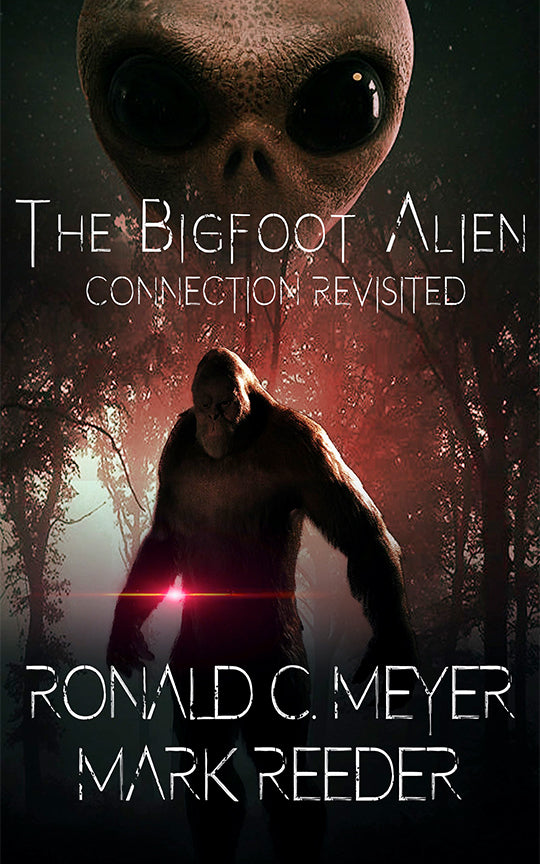Understanding the Psychological Impact of Bigfoot Encounters
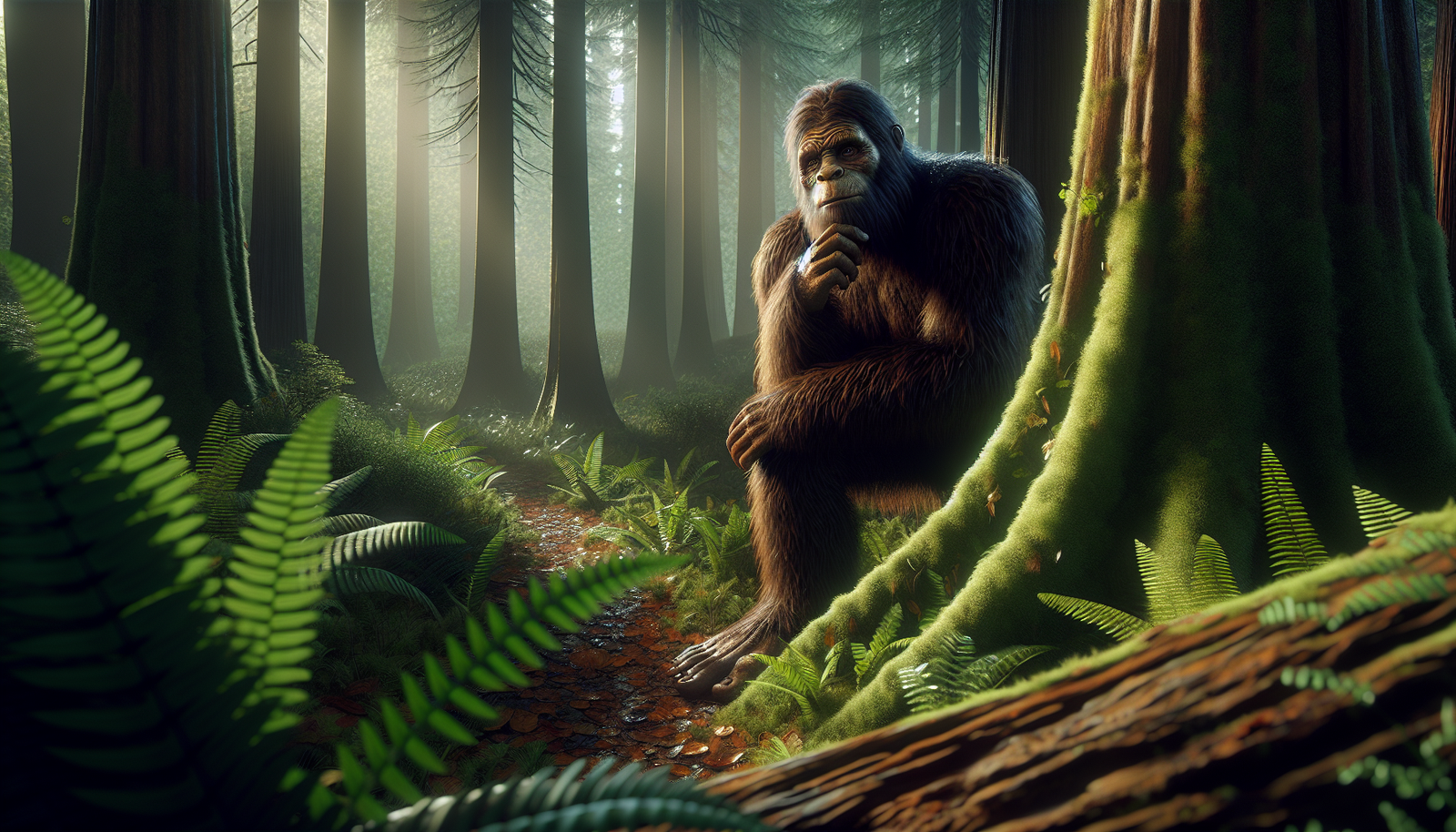
By Anthony Romano, Cryptozoologist
The Tug-of-War Between Belief and Skepticism
Imagine you're hiking alone in the dense woods of the Pacific Northwest. The air is thick with the scent of pine, and the only sounds are the crunch of leaves beneath your feet and the occasional call of a distant bird. Suddenly, you hear a twig snap behind you. You turn, and for a brief moment, you see a massive, hair-covered figure standing just beyond the treeline. It locks eyes with you, then vanishes into the undergrowth.
In that instant, your world changes. You've just had a Bigfoot encounter - or have you?
This scenario illustrates the intense psychological conflict that many alleged Bigfoot witnesses experience. On one hand, they're certain of what they've seen. The encounter feels viscerally real, often described with vivid detail that suggests a genuine experience. On the other hand, they're acutely aware of the skepticism they'll face if they share their story.
"I know what I saw," one anonymous witness reported, "but I also know how crazy it sounds. It's like my brain is at war with itself."
This internal struggle can lead to significant psychological stress. Witnesses often grapple with whether to keep their experience private, risking feelings of isolation, or to share it and potentially face ridicule or disbelief from others. This dilemma can be particularly acute for those in professional or academic fields where credibility is paramount.
The belief in Bigfoot, like other cryptids, can serve as a powerful coping mechanism. In a world that often feels overly rational and predictable, the idea that an undiscovered primate could be roaming the wilderness provides a sense of wonder and possibility. It's a reminder that there are still mysteries to be solved, frontiers to be explored.
As one researcher noted, "Monsters represent dark aspects of our subconscious worlds and can be metaphors for the challenges of life." In this light, Bigfoot becomes more than just a potential biological reality - it's a symbol of the unknown, embodying both our fears and our fascination with the wilderness.
The Emotional Rollercoaster of Close Encounters
For those who claim to have encountered Bigfoot, the emotional impact can be intense and long-lasting. Reports often describe a range of powerful emotions, from exhilaration and awe to terror and profound unease.
Consider the account of Rachel Gendreau, who reported seeing a massive wolflike creature with glowing white eyes while driving on a rural road. "It doesn't leave me," Gendreau said of her experience. "It's bothersome because there's no explanation for it. It doesn't make any sense at all. It would have been easier if I had never seen it."
Gendreau's experience highlights the emotional toll that alleged Bigfoot encounters can take. Many witnesses report feelings of vulnerability and anxiety that persist long after the initial sighting. Some develop a fear of returning to wooded areas or experience nightmares and intrusive thoughts about their encounter.
In more extreme cases, witnesses may develop symptoms consistent with post-traumatic stress disorder (PTSD). The shock of seeing something that challenges their understanding of reality, combined with the fear of not being believed, can create a perfect storm of psychological distress.
One anonymous witness described it this way: "It's like I'm carrying around this huge secret that I can't fully process. I want to forget it, but at the same time, I can't stop thinking about it. It's changed how I see the world."
These emotional responses underscore the profound impact that Bigfoot encounters can have on an individual's psyche. Whether the creature is real or not, the experience itself is very real to the witness, and the psychological consequences can be significant and long-lasting.
When Memory Plays Tricks: The Role of Perception and Recall
The human mind is a marvel of complexity, capable of incredible feats of memory and imagination. But it's also fallible, subject to biases and distortions that can significantly alter our perception and recall of events. This is particularly relevant when it comes to Bigfoot encounters, where the reliability of eyewitness accounts is often called into question.
Research has shown that our memories are not like video recordings, faithfully capturing events as they occur. Instead, they're more like reconstructions, pieced together from fragments of sensory information and influenced by our beliefs, expectations, and subsequent experiences.
This phenomenon, known as memory conformity, can have a significant impact on Bigfoot sightings. A witness might initially perceive a large, dark shape in the woods as a bear or a shadow. But as they replay the memory in their mind, influenced perhaps by media portrayals of Bigfoot or conversations with other believers, the details of the encounter may shift. The shape becomes more humanoid, the movements more deliberate, until the witness becomes convinced they've seen Bigfoot.
Dr. Elizabeth Loftus, a cognitive psychologist and expert on human memory, explains: "Our memories are constantly being updated and reconstructed. Each time we recall an event, we have the potential to alter it slightly, incorporating new information or interpretations."
This doesn't mean that all Bigfoot sightings are the result of faulty memory. But it does highlight the complex interplay between perception, memory, and belief that can shape our understanding of unusual experiences.
Another factor to consider is the phenomenon of pareidolia - the tendency for the human brain to perceive familiar patterns or shapes where none exist. This can lead people to see faces in clouds, or in this case, to interpret natural formations or shadows as the figure of Bigfoot.
John Bolduan's account of seeing a 7-foot-tall prehistoric bird in Wisconsin illustrates how powerful these perceptual effects can be. Despite his best efforts to find a rational explanation, Bolduan remains convinced of what he saw, demonstrating how deeply these experiences can impact our beliefs and worldview.
The Social Dimension: Communities of Belief
Humans are inherently social creatures, and our beliefs are often shaped by the communities we belong to. This is particularly evident in the world of Bigfoot enthusiasts, where shared experiences and beliefs can create tight-knit communities of like-minded individuals.
These communities serve several important psychological functions. They provide validation for experiences that might otherwise be dismissed or ridiculed by mainstream society. They offer a sense of belonging and acceptance, particularly for individuals who may feel isolated or misunderstood due to their beliefs.
"It's like finding your tribe," one Bigfoot enthusiast explained. "These are people who get it, who don't look at you like you're crazy when you talk about what you've seen or experienced."
However, these communities can also create echo chambers, where beliefs are reinforced without critical examination. This can lead to a phenomenon known as confirmation bias, where individuals seek out information that supports their existing beliefs while dismissing contradictory evidence.
The rise of social media has had a significant impact on these communities. Online forums and Facebook groups dedicated to Bigfoot sightings have made it easier than ever for enthusiasts to connect and share their experiences. While this has fostered a sense of community and allowed for the rapid dissemination of information, it has also created new challenges.
The pressure to produce compelling content for social media can sometimes lead to exaggeration or even fabrication of encounters. The allure of going viral with a Bigfoot video or photo can be strong, potentially compromising the integrity of genuine research efforts.
Despite these challenges, many Bigfoot communities maintain a serious and scientific approach to their investigations. Organizations like the Bigfoot Field Researchers Organization (BFRO) emphasize the importance of rigorous documentation and analysis of sightings.
These communities highlight the complex social dynamics at play in the world of Bigfoot research. They serve as a reminder that belief in Bigfoot is not just an individual phenomenon, but a social one, shaped by shared narratives, experiences, and the human need for connection and understanding.
Fear and Fascination: The Psychological Pull of the Unknown
At the heart of the Bigfoot phenomenon lies a paradox: the creature inspires both fear and fascination in equal measure. This duality is key to understanding its enduring appeal and the psychological impact it has on those who encounter it or believe in its existence.
The fear associated with Bigfoot is primal and visceral. It taps into our deepest instincts, reminding us that we are not always at the top of the food chain. The idea of a large, powerful, and unknown creature lurking in the wilderness triggers our fight-or-flight response, even if we're only imagining its presence.
Yet this fear is often accompanied by an intense fascination. The possibility of discovering a new species, especially one so similar to humans, is thrilling. It speaks to our innate curiosity and our desire to push the boundaries of knowledge.
"There's something incredibly exciting about the idea that there could be undiscovered creatures out there," says cryptozoology enthusiast Mark Johnson. "It's like being an explorer in a world where most of the map has already been filled in."
This combination of fear and fascination can be psychologically powerful. It creates a state of heightened arousal that can be addictive, driving people to seek out Bigfoot encounters or dedicate significant time and resources to Bigfoot research.
For some, the pursuit of Bigfoot becomes a form of extreme sport or adventure tourism. Bigfoot hunting expeditions offer participants the thrill of the chase and the possibility of a close encounter, all within the relative safety of a guided experience.
But the psychological impact of this fear-fascination dynamic goes beyond just thrill-seeking. It can also serve as a catalyst for personal growth and self-discovery. Many Bigfoot enthusiasts report that their experiences have led them to develop a deeper connection with nature, a greater appreciation for the mysteries of the world, and a more open-minded approach to the unknown.
"Searching for Bigfoot changed my life," says Sarah Thompson, a long-time Bigfoot researcher. "It taught me to question my assumptions, to look at the world with fresh eyes. Even if I never find concrete proof, the journey itself has been transformative."
This transformative aspect of the Bigfoot phenomenon highlights its psychological significance. Whether Bigfoot exists or not, the idea of its existence challenges us to confront our fears, expand our understanding of the world, and grapple with the limits of our knowledge.
The Media's Role: Shaping Perceptions and Beliefs
The media plays a crucial role in shaping public perception of Bigfoot and influencing the psychological impact of alleged encounters. From sensationalized news reports to reality TV shows and documentaries, media portrayals of Bigfoot have a significant effect on how people interpret their own experiences and form beliefs about the creature's existence.
Television shows like "Finding Bigfoot" and "Mountain Monsters" have brought the search for Sasquatch into living rooms across America. While these programs often emphasize the excitement of the hunt and the possibility of discovery, they can also reinforce certain stereotypes and expectations about what a Bigfoot encounter should look like.
Marc Etkind, general manager of Destination America, a cable network that has aired multiple Bigfoot-themed shows, notes the public's insatiable appetite for these stories: "We leave no monster unturned," he says. "Monsters are starting to pitch us."
This media saturation can lead to a phenomenon known as the "Bigfoot effect," where increased exposure to Bigfoot-related content makes people more likely to interpret ambiguous stimuli as evidence of the creature's existence. A shadow in the woods or an unexplained sound might be more readily attributed to Bigfoot by someone who has been immersed in this type of media.
The influence of media on Bigfoot beliefs extends beyond just television. Books, podcasts, and websites dedicated to Bigfoot research and encounters provide a constant stream of information and speculation. While some of these sources strive for scientific rigor, others prioritize entertainment value over factual accuracy.
Social media has added another layer to this media landscape. Platforms like YouTube and TikTok have become hotbeds for Bigfoot-related content, with users sharing their own alleged encounters or analyzing footage captured by others. The viral nature of social media can quickly amplify these stories, sometimes outpacing efforts to verify or debunk them.
This media environment can have a significant psychological impact on both believers and skeptics. For believers, it can reinforce their convictions and provide a sense of validation. For skeptics, it might lead to frustration or dismissiveness towards the entire subject.
The media's role in shaping Bigfoot narratives also raises important questions about the nature of belief in the digital age. In a world where information (and misinformation) spreads rapidly, how do we critically evaluate extraordinary claims? How do media portrayals influence our perception of the natural world and our place in it?
These questions highlight the complex relationship between media, belief, and the psychological impact of Bigfoot encounters. They remind us that our understanding of this phenomenon is not formed in isolation, but is heavily influenced by the cultural narratives and media representations that surround us.
The Quest for Proof: Psychological Implications of the Search
The search for definitive proof of Bigfoot's existence is a driving force for many enthusiasts, and this quest can have profound psychological implications. The dedication and persistence of Bigfoot researchers in the face of skepticism and lack of conclusive evidence offer insights into the power of belief and the human need for discovery.
For many Bigfoot researchers, the search becomes a lifelong pursuit. It provides a sense of purpose and meaning, offering the tantalizing possibility of making a groundbreaking discovery. This quest can be psychologically rewarding, fostering feelings of excitement, hope, and anticipation.
"Every time I go out into the woods, there's this sense of possibility," says Tom Wilson, a long-time Bigfoot researcher. "Maybe today will be the day we find that irrefutable piece of evidence. It's what keeps me going."
However, the lack of conclusive proof can also lead to frustration and cognitive dissonance. Researchers must grapple with the disconnect between their beliefs and the absence of widely accepted evidence. This can create psychological strain, particularly when faced with skepticism from the scientific community or the general public.
The search for Bigfoot often involves the use of various technologies, from night vision cameras to DNA analysis. While these tools offer the promise of scientific validation, they can also create a sense of pressure. Each expedition that fails to produce clear evidence can be disheartening, potentially leading to doubt or disillusionment.
Yet many researchers find ways to maintain their beliefs in the face of these challenges. Some point to the vast expanses of unexplored wilderness as reason to keep searching. Others focus on the accumulation of anecdotal evidence and the consistency of reports across different regions and cultures.
The psychological impact of this ongoing search extends beyond just the researchers themselves. It can affect entire communities, particularly in areas known for frequent Bigfoot sightings. These locations often embrace their Bigfoot-related notoriety, incorporating it into local tourism and culture. This can create a shared narrative that shapes the community's identity and influences how residents interpret their own experiences in nature.
The quest for proof also raises interesting questions about the nature of evidence and belief. What level of proof would be sufficient to convince skeptics? How do we reconcile personal experiences with scientific standards of evidence? These questions highlight the complex interplay between belief, evidence, and the psychological need for certainty.
Ultimately, the search for Bigfoot proof serves as a powerful example of the human drive to explore the unknown and push the boundaries of knowledge. Whether or not Bigfoot is ever proven to exist, the psychological impact of this quest reveals much about our relationship with mystery, our desire for discovery, and our capacity for sustained belief in the face of uncertainty.
Therapeutic Aspects: The Healing Power of Bigfoot Narratives
While the idea of Bigfoot might seem far-removed from traditional therapeutic practices, engaging with Bigfoot narratives and communities can have surprising psychological benefits for some individuals. The therapeutic potential of Bigfoot belief and research offers an intriguing perspective on how we cope with uncertainty and find meaning in the world around us.
For many, the act of searching for Bigfoot provides a form of nature therapy. It encourages people to spend time outdoors, fostering a connection with the natural world that can have significant mental health benefits. The physical activity involved in Bigfoot expeditions, combined with the mindfulness required to observe one's surroundings closely, can reduce stress and improve overall well-being.
"When I'm out in the woods looking for signs of Bigfoot, I feel at peace," explains Lisa Chen, a weekend Bigfoot enthusiast. "It's like all the stress of my daily life just melts away. Even if I don't find anything, the experience itself is rejuvenating."
Bigfoot narratives can also serve as a form of exposure therapy for some individuals. By engaging with stories of Bigfoot encounters in a controlled setting, people with fears related to the wilderness or the unknown can gradually become more comfortable with these ideas. This can lead to increased confidence and a greater willingness to explore natural environments.
The community aspect of Bigfoot research can provide valuable social support. For some individuals who may feel isolated or misunderstood in their daily lives, finding a group of like-minded Bigfoot enthusiasts can offer a sense of belonging and acceptance. These social connections can be particularly beneficial for mental health, providing a support network and a shared sense of purpose.
Engaging with Bigfoot narratives can also stimulate creativity and imagination. The act of considering the possibility of unknown creatures can encourage flexible thinking and openness to new ideas. This cognitive flexibility can be beneficial in many areas of life, fostering problem-solving skills and adaptability.
Some therapists have even incorporated Bigfoot-related themes into their practice. Metaphors related to searching for the unknown or navigating uncharted territory can be powerful tools for discussing personal growth and life challenges. The idea of Bigfoot as a creature that remains hidden yet impacts those around it can serve as a useful analogy for discussing unconscious motivations or unacknowledged aspects of the self.
Dr. Karen Johnson, a psychologist who has worked with Bigfoot enthusiasts, notes: "For some clients, the search for Bigfoot becomes a metaphor for their own personal quests. It allows us to explore themes of persistence, hope, and dealing with uncertainty in a way that feels less threatening than directly addressing their personal issues."
However, it's important to note that while engagement with Bigfoot narratives can have therapeutic benefits for some, it's not a substitute for professional mental health care when needed. The line between healthy interest and obsession can sometimes blur, and it's crucial for individuals to maintain a balanced perspective.
The therapeutic aspects of Bigfoot narratives highlight the complex ways in which folklore and belief systems can impact our psychological well-being. They remind us that the stories we tell and the mysteries we pursue can have profound effects on our mental health, our relationships, and our understanding of the world around us.
Conclusion
As we've explored the multifaceted psychological impact of Bigfoot encounters, from the internal struggle between belief and skepticism to the therapeutic potential of engaging with Bigfoot narratives, one thing becomes clear: the significance of Bigfoot extends far beyond the question of its physical existence.
Bigfoot serves as a mirror, reflecting our deepest fears, our wildest hopes, and our enduring connection to the natural world. It challenges us to confront the unknown, to question our assumptions, and to grapple with the limits of our knowledge. Whether seen as a flesh-and-blood creature or a powerful cultural symbol, Bigfoot continues to captivate our collective imagination and shape our psychological landscape.
The experiences of those who claim to have encountered Bigfoot, and those who dedicate themselves to searching for evidence of its existence, offer valuable insights into human psychology. They highlight our capacity for belief in the face of uncertainty, our need for wonder and mystery in an increasingly explained world, and the powerful role that community and shared narratives play in shaping our perceptions and experiences.
As we continue to explore the wilderness areas of North America, armed with advanced technology and scientific methodologies, the question of Bigfoot's existence remains open. But perhaps the true value of the Bigfoot phenomenon lies not in the potential discovery of a new species, but in what it reveals about ourselves - our fears, our hopes, our need for connection, and our enduring fascination with the mysteries of the natural world.
In the end, whether Bigfoot exists as a biological reality or solely as a product of our collective imagination, its psychological impact is undeniably real and profoundly human. It reminds us that even in our modern, data-driven world, there is still room for mystery, for wonder, and for the thrill of the unknown. And in that reminder lies a powerful truth about the human experience - that our quest for understanding is just as important as the answers we seek.
From Bigfoot to UFOs: Hangar 1 Publishing Has You Covered!
Explore Untold Stories: Venture into the world of UFOs, cryptids, Bigfoot, and beyond. Every story is a journey into the extraordinary.
Immersive Book Technology: Experience real videos, sights, and sounds within our books. Its not just reading; its an adventure.



